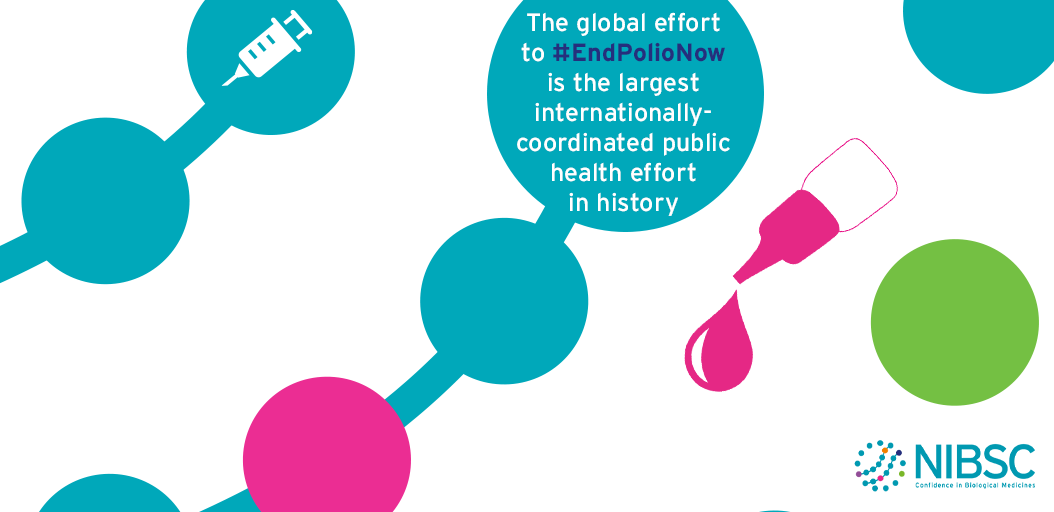Polio
The Division of Virology has worked on polio vaccines since their beginning in the 1960s. In 1988 the World Health Organisation (WHO) committed to the global eradication of poliomyelitis and by 2014 only 3 countries (Afghanistan, Pakistan and Nigeria) had never interrupted transmission.
Two of the 3 serotypes appear to have been eradicated, type 2 in 1999 and type 3 in 2012. India was declared polio free in 2014, which is a stunning achievement given the epidemiological circumstances.
Efforts at NIBSC are now focused on the end game and the post-eradication era, where vaccination will have to continue until it is certain that the virus has gone and all residual sources of the virus are contained or dealt with. This includes vaccine production, which requires the growth of huge amounts of virus which can either cause or revert to a form that can cause paralysis.

A major project is to devise strains or production methods where this risk is eliminated. Novel production strains require novel assay procedures that must be validated and the tests are under investigation so that for the first time they are understood properly.
Environmental screening and investigation of isolates is crucial to the end game and there is particular investigation of an individual who has been excreting poliovirus for over thirty years. The division plays a crucial role in maintaining the quality of vaccines used now as well as those intended for the future. All activity is complicated by the need to contain work on polio in the near future.